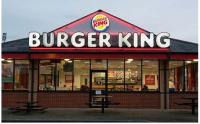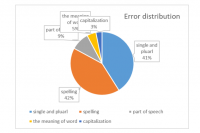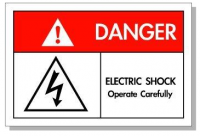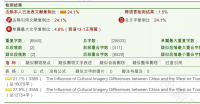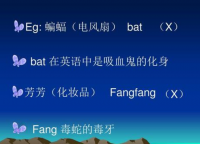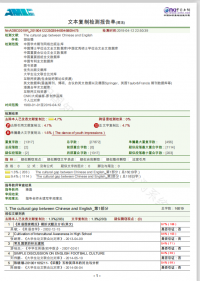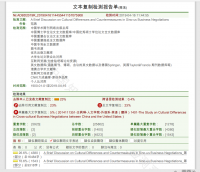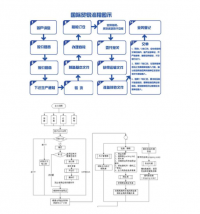当前快餐品牌营销存在的问题及对策论文——以汉堡王为例
摘要:
由于经营的不善,美国市场上的第二大快餐巨头 ——汉堡王 一直处于不温不火的地位,文章旨在探讨如何改善汉堡王的营销策略,通过有效的市场计划,使得汉堡王能在中国的快餐行业,营造出肯德基,麦当劳,汉堡王,三足鼎立的局面。
关键词:
汉堡王;品牌营销策略;市场分析;建议;改善措施
Abstract:Due to poor management, Burger King, the second largest fast food giant in the American market, has been in a tepid position. This article aims to explore how to improve Burger King's marketing strategy, through effective market planning, so that Burger King can create a tripartite situation in China's fast food industry, including KFC, McDonald's, Burger King and so on
Keywords:Burger King;Brand Marketing Strategy;Market Analysis;Suggestions;Improvement Measures
Chapter One: Current situation of fast food industry in China
1.1Development Trend of Fast Food Industry in China
Fast food industry is the pioneer of the development of the catering industry. With the convenience and time-saving characteristics of most consumers, the fast food industry has become the main force of the catering industry. In China's local market, the fast food industry has also been divided into two groups. Under the original Chinese fast food, western fast food is increasingly popular with the public. Since 2010, the golden age of Chinese fast food has arrived quietly, centering on the developed areas of big cities such as Beijing, Shanghai and Guangzhou, gradually spreading to other cities, eventually to the whole country and to the mature stage of development. However, western fast food brands such as KFC, McDonald's and so on are gradually popular with consumers in the Chinese market. There is a certain gap between Chinese fast food and Western fast food. Since KFC entered China in 1987, it has brought a brand new catering concept into China. Since then, McDonald's, Burger King, Pizza Hut and other Western fast food enterprises have entered the Chinese market. At the same time, the domestic fast food industry has also developed rapidly. [1]However, throughout the whole situation, the domestic fast food industry has been in the stage of blindly imitating Western-style fast food enterprises. Compared with the western fast food brand, the brand awareness of Chinese fast food enterprises is much weaker, and Chinese fast food enterprises generally focus on imitating western fast food in production and operation, resulting in the product without characteristics.
1.2Development Prospect of Fast Food Industry in China
In the first half of 2012, the development situation of China's fast food industry is very grim. In the first half of the year, the growth rate of large fast food chains was about 10% year on year. The proportion of new outlet expansion plans completed was only 20% - 30%, while the profit of local fast food brands was less than 8%. Although China's fast food industry is facing a severe situation, the overall development is on the rise. In recent years, China's catering industry has inherited China's catering culture and made great progress with the world's catering industry. Especially in the 30 years after the reform and opening up, the scale and level of China's catering market have been constantly improving. Fast food has become an indispensable part of China's food and beverage market, and vigorously promoted the rapid development of China's catering industry economy.[2]However, in the process of development, Chinese fast food enterprises are facing enormous competitive pressure from western fast food enterprises. According to the development plan of Chinese catering industry from 2013 to 2017, the catering industry in China is still in a small, scattered and weak state. More than 90% of catering enterprises are small enterprises. Since the first KFC fast food restaurant opened in Beijing in 1987, it has more than 100 stores in more than 30 cities in China last year, with thousands of customers every day. McDonald's entered Beijing only in 1990. In 1995, McDonald's opened 62 stores in China. In June 2005, Burger King opened its first store in China in Shanghai, located on Nanjing West Road, Xi'an District, Shanghai.[3]In fact, as early as around 2003, Burger King intends to enter China. They commissioned an international consulting firm to conduct an advance survey of the Chinese market. Burger King has branches in Beijing, Tianjin, Shanghai, Nanjing, Xi'an, Guangzhou, Shenzhen, Hangzhou, Xiamen and Quanzhou. Today, Burger King has nearly 50 branches in mainland China. At that time, Burger King has become the second largest catering company in the world. Western fast food enterprises seize the opportunity and gain great advantages in market development. From the chain size alone, Western fast food chains have surpassed Chinese fast food chains. Because of the early entry into the market, the brand of Western fast food enterprises has established a good image and brand awareness in the eyes of consumers. Compared with international well-known catering companies, Chinese well-known catering companies lag far behind in scale, standardization and market positioning. Small-scale enterprises, the process of capital chain is slow, showing a low-level development trend. With the steady development of China's economy and the continuous improvement of people's living standards, it will certainly bring more mature conditions for the development of fast food industry and enhance the market demand, which means that the development prospects of China's fast food industry will be bright. The steady growth of China's economy will also make the Chinese market a growth point in the global market in the future, so the fierce competition China's fast food industry will face is unprecedented.
目录
摘要: 3
关键词: 3
Chapter One: Current situation of fast food industry in China 3
1.1Development Trend of Fast Food Industry in China 3
1.2Development Prospect of Fast Food Industry in China 4
Chapter Two: Problems and Reasons of Fast Food Industry in China 5
2.1 Problems in Fast Food Industry 5
2.2 Reasons for Problems in Fast Food Industry 6
Chapter Three: Marketing Status of Western Fast Food Industry in China 7
3.1 Diversification of Marketing Forms 7
3.2 What are the deficiencies of marketing innovation strategy consciousness? 8
Chapter Four: Advantages and Disadvantages of Burger King Fast Food Brand in Chinese Market 9
4.1 advantage 9
4.2 disadvantage 10
Chapter Five: The countermeasure of Burger King's marketing problem 11
5.1 Focus on Advantages to Create Brands 11
5.2 Accurate Market Positioning 11
5.3 Greater emphasis on food safety and hygiene 13
5.4 Improving Customers Understanding of Brand 13
Chapter Six: Summary 14
参考文献 14
参考文献
[1]Philip Kevin Lane Keller Marketing Management[M]Shanghai: Shanghai People's Publishing House,,2006
[2]冯俊.现代快餐经营与管理[M].中国轻工业出版社, 2004.
[3]钟国栋.中西式快餐企业管理营销差异比较[J].工业技术经济,2008.
[4]唐飞.西式快餐的目标市场分析[J].东北财经大学学报,2008.
[5]冯俊.现代快餐经营与管理[M].中国轻工业出版社, 2004.
[6]肖崇俊.西式快餐生产的标准化控制[J].中国食品,2005.
[7]Philip Marketing Management - Analysis, Planning, Implementation and Control[M].Shanghai: People's Publishing House,2005
[8]Michael Porter.Competitive strategy[M].Beijing Publishing House,2005.



